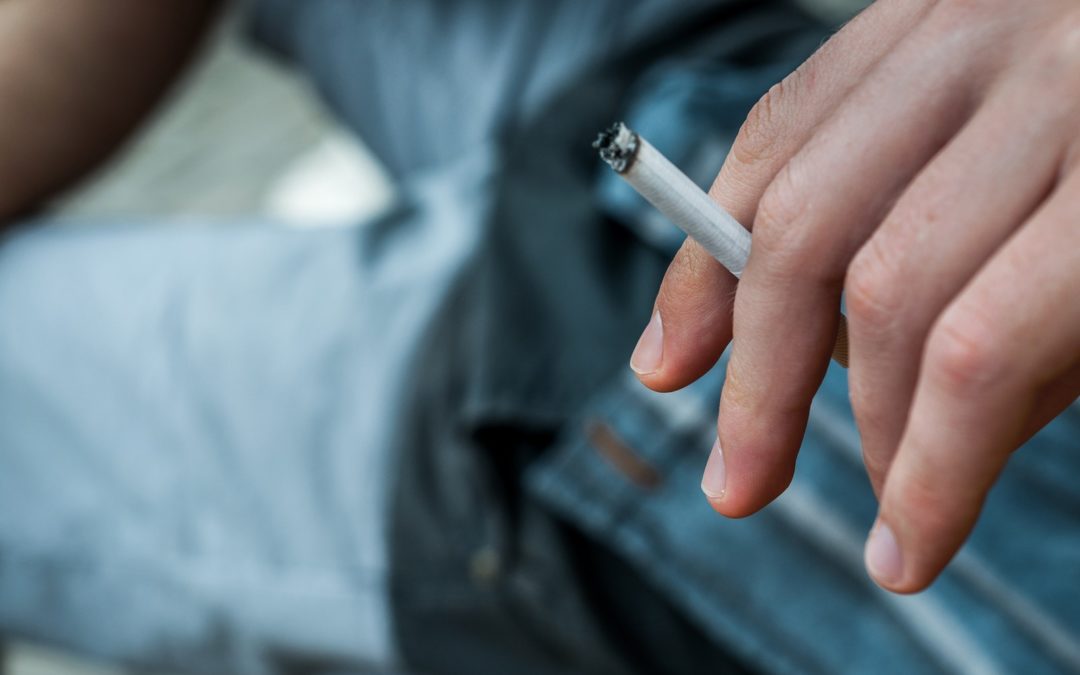Table of Contents
Teens are at a higher risk of developing an addiction due to the sensitive nature of their growing brains that control the reward & pleasure centers. When most parents think of teenage addiction, they immediately think of drug & alcohol use.
Although this is a widespread problem, there are other things youth can get addicted to as well. These are known as “behavioral” or “process” addictions. They affect similar areas of the brain as substance abuse, disrupting dopamine receptors and stunting development in the pre-frontal cortex.
Understand some of the most common addictions in youth, how they affect the teen brain, and what to do to prevent them.
The Substance Issue in Teens
Drug & alcohol use is by far the most well-known addiction in teens. It is a public health problem affecting youth across all demographics. Over 85% of teens report they know someone who drinks, does drugs, or smokes during the school day. Most teens don’t intend to get addicted, claiming they just do it to “ chill out” or “relax from school.” However, there is a high risk of them developing an addiction due to the vulnerable stage of development they are in.
Teens in today’s world also have more access to drugs & alcohol than in the past. This is partly due to the internet, making it easier than ever to buy online.
Teens can access drugs and consume content that glorifies drug use across nearly every platform, from private Snapchat stories selling weed, to influencers on Instagram posting pictures of alcohol & cocaine. The culture that teens are growing up in contributes significantly to their perception of substance abuse.
As adults use drugs and get potent pharmaceuticals prescribed, this causes a trickle-down effect on teens. They may think that anything prescribed by a doctor is “safe” or see family members drink excessively, causing them to embody the behaviors that they observe.
Behavioral Addictions in Teens
Behavioral addictions are compulsive behaviors of an action that become almost obsessive. They are also referred to as “process addictions.” Teens with these feel an intense desire to repeat a behavior that gives them pleasure, regardless of the negative consequences it has on them. These can be difficult to quit without the intervention of a parent or adult.
Almost any behavior (even healthy ones such as eating or exercise) can become addictive if it drives intense pleasure and impacts daily functioning. These compulsive behaviors influence the pleasure & reward centers. If they can’t complete the behavior, it can cause aggression, depression, or other symptoms of withdrawal commonly found in youth with substance addictions.
Teens may also feel shame or embarrassment around these behaviors. For example, a teen with a porn addiction may go to great lengths to clear their internet history and keep this a secret. Teens who struggle with compulsive eating may wait until everyone goes to bed to indulge.
Most Common Addictions in Youth
Although parents usually think of drugs when they think of teen addiction, certain behavioral addictions may have higher rates than drugs & alcohol. Social media and smartphone use addiction is extremely high among teens from all backgrounds. Research shows over 80% of teens use their phones daily, with an addiction rate of over 35%.
Most health professionals recommend 2-3 hours MAX of screen time, but the average youth spends 8-10 hours on their phone. This can cause similar effects on the brain as drug & alcohol addiction.
Most Common Substance Addictions
It’s important for parents, educators, and health professionals to understand what substances teens are addicted to. This will help guide treatment and prevention strategies. For generations, alcohol has historically been the most commonly experimented with substance among youth, partly due to its easy accessibility and social acceptance.
However, more teens today are turning to cannabis, nicotine, and other potent drugs. According to the National Center for Drug Abuse Statistics, the most common substance addictions among youth are:
Commonly Substance Addictions | Rates of Use Among US Youth | Symptoms & Warning Signs |
Alcohol | 40% | Bottles missing from the liquor cabinet, smelling alcohol on their breath, classic symptoms of a hangover, blacking out, or memory loss |
Cannabis | 43% | Smelling like weed, glossy or red eyes, finding lighters or pipes on them, lack of motivation, a large increase in appetite (munchies) |
Nicotine | 10% | Finding empty vape boxes or cartridges, chronic cough or throat clearing, chest pain, mood swings or aggression (when they go a period without their vape) |
Stimulants (Adderall, Ritalin) | Around 10% | Sudden burst of energy, fast speech, shaking, sweating, anxiety, increased heart rate |
Benzos (Xanax, Klonopin) | Around 5% | Isolation, memory loss, drowsiness, confusion, chronic nausea, constipation, diarrhea |
Psychedelics (LSD, magic mushrooms, MDMA) | Around 6% of HS seniors | Odd personality changes, paranoia, hallucinations, delusions, anxiety, sweating, memory loss or loss of consciousness, dehydration |
OTC Drugs | 3% | Bottles missing from medicine cabinet, change in sleep/appetite, mood swings, finding empty bottles in their room |
Most Common Behavioral Addictions
In the media, common behavioral addictions that often get referenced when discussing youth are smartphones and video games. Most teens spend a lot of time on their phones, scrolling social media, and getting a dopamine boost every time someone interacts with their post.
Likewise, playing and winning video games can also boost dopamine. They also provide an easy escape from reality, similar to drug addiction. Gaming isn’t inherently bad, it can be an entertaining way for teens to spend their free time, connect with others, and increase their hand-eye coordination. However, studies show excessive gaming can lead to a lack of sleep, isolation, depression, anxiety, and aggression.
Other common behavioral addictions in youth include:
- Shopping
- Eating
- Lying
- Exercising
- Sex
- Watching porn
- Sports betting
- Social media
What Causes Addiction in Teens?
There is no one single cause of addiction in teens. A variety of biological, environmental, and psychosocial factors contribute to addiction. For substance abuse, teens may have genetic vulnerabilities (e.g., a parent who struggles with alcoholism) that influence their addiction.
Behavioral addictions can be caused by executive functioning problems, isolation & boredom, or as a way to cope with uncomfortable feelings.
Common causes of addiction in teens include:
- Family history of addiction
- Temperament or a naturally addictive personality
- Victims of bullying or discrimination
- Family rejection
- Trauma
- Peer influence
- Academic pressure
- Low self-esteem
- Depression
- Anxiety
- OCD
- ADHD
Signs of Addiction in Teens
The signs of addiction in teens can vary greatly depending on the severity of their addiction and what they are addicted to. Regardless of whether it is a substance or behavioral addiction, both tend to impact daily functioning, emotional health, and mood. However, they can manifest as different symptoms, each presenting with their own characteristics.
Signs of Substance Addiction
- Finding drugs or alcohol in their room
- Acting visibly high or drunk
- Smelling weed or alcohol on their clothes/breath
- Changes in mood & personality
- Irritability or aggression
- Sudden decline in school
- Alcohol or medication missing from cabinets in the home
- Secretive behavior
- Isolation
- Nausea, headaches, or flu-like symptoms
Signs of Behavioral Addictions
- Repeated or compulsive behaviors that become an obsession
- Inability to stop the behavior
- Sudden decline in school
- Shame, guilt, or embarrassment surrounding the behavior
- Keeping the behavior hidden
- Odd changes in personality or mood swings
- Irritability or aggression
How to Help A Teen Struggling with Addiction
If you recognize the signs of addiction in your teen, it’s important to confront them about their use or behavior and provide early intervention. Of course, the treatment for addiction can vary greatly depending on the severity of addiction and how it affects their life.
Certain behavioral addictions may not require professional treatment but rather boundaries set by parents to help them break their habits.
For more serious addictions (e.g., illicit drugs), it’s recommended to get them involved in rehab or an intensive outpatient program to protect their health & safety. Treatment for behavior addictions works similarly to substance abuse.
Similar regions of the brain are targeted to help break compulsive behaviors that may include CBT, DBT, group therapy, or 12-step programs. Some ways you can support your teen struggling with addiction include:
- Confront them about their addiction in a non-judgmental way. Ask questions and actively listen to understand what drives their behavior or substance use.
- Model healthy behaviors in the home and set good examples (e.g., take breaks from your phone and keep drinking to a minimum).
- Practice healthy stress reduction
- Set limits & boundaries, and follow through with consequences.
- Provide them with resources to self-educate.
- Enroll them in a treatment program or counseling services.
Professional Behavioral and Substance Addiction Treatment
If you identify warning signs that your teen is struggling with a behavioral addiction or substance abuse problem, it’s important to get them treatment to support their long-term recovery. At Clearfork Academy, our team of compassionate, licensed therapists understands the complex nature of out-of-control teens.
We offer several levels of care, including residential treatment, PHP, and IOP services. Reach out to our Admissions team to learn more.
Sources
Reported Drug Use Among Adolescents in 2023. National Institute on Drug Abuse.
Drug Use Among Youth. National Center for Drug Abuse Statistics.
Exposure to video games: effects on sleep and on post-sleep cognitive abilities. A systematic review of experimental evidences. National Library of Medicine.
Smartphone Use and Its Addiction among Adolescents in the Age Group of 16–19 Years. National Library of Medicine.
Austin Davis, LPC-S
Founder & CEO
Originally from the Saginaw, Eagle Mountain area, Austin Davis earned a Bachelor of Science in Pastoral Ministry from Lee University in Cleveland, TN and a Master of Arts in Counseling from The Church of God Theological Seminary. He then went on to become a Licensed Professional Counselor-Supervisor in the State of Texas. Austin’s professional history includes both local church ministry and clinical counseling. At a young age, he began serving youth at the local church in various capacities which led to clinical training and education. Austin gained a vast knowledge of mental health disorders while working in state and public mental health hospitals. This is where he was exposed to almost every type of diagnosis and carries this experience into the daily treatment.
Austin’s longtime passion is Clearfork Academy, a christ-centered residential facility focused on mental health and substance abuse. He finds joy and fulfillment working with “difficult” clients that challenge his heart and clinical skill set. It is his hope and desire that each resident that passes through Clearfork Academy will be one step closer to their created design. Austin’s greatest pleasures in life are being a husband to his wife, and a father to his growing children. He serves at his local church by playing guitar, speaking and helping with tech arts. Austin also enjoys being physically active, reading, woodworking, and music.




